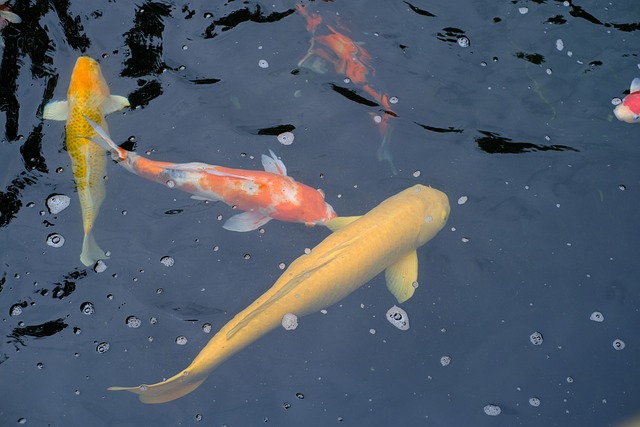
What’s on the Horizon?
The world of wildlife is nothing short of spectacular, with new discoveries and species surfacing every year. As we gear up for 2024, scientists, ecologists, and enthusiasts are buzzing with excitement about the potential new animal species waiting to be identified. From the depths of the oceans to the dense rainforests, the possibilities for discovery are endless. In this article, we’ll explore the predictions for new animal species in 2024, the factors influencing these discoveries, and why they matter to our planet.

The Thrill of Discovering New Species
Discovering a new animal species is akin to unearthing a hidden gem. It’s a reminder that despite human advancements, nature still holds countless secrets. Each year, researchers stumble upon species previously unknown to science. These discoveries broaden our understanding of biodiversity, help us conserve ecosystems, and shed light on evolutionary processes.
In 2023 alone, over 400 new animal species were identified, ranging from tiny insects to deep-sea creatures. Experts believe 2024 could be another remarkable year, with the potential to surpass previous records.
Hotspots for New Discoveries
Certain regions of the world are renowned for their biodiversity and are prime locations for discovering new species. Here are some areas likely to yield exciting finds in 2024:

1. The Amazon Rainforest
The Amazon, often referred to as the “lungs of the Earth,” is a biodiversity powerhouse. With millions of species yet to be cataloged, scientists predict that new reptiles, amphibians, and insects could emerge from this region in 2024. Additionally, cryptic mammals and bird species may also be uncovered as exploration deepens.
2. Deep-Sea Ecosystems
The vast and largely unexplored ocean depths continue to be a treasure trove for marine biologists. In 2024, researchers equipped with cutting-edge technology are expected to uncover new species of jellyfish, crustaceans, and fish that have adapted to extreme underwater environments.

3. Southeast Asia’s Tropical Forests
From Borneo to Vietnam, Southeast Asia’s tropical forests are bursting with potential for new discoveries. Frogs, snakes, and beetles are among the groups most likely to surprise researchers in the coming year.
4. African Savannahs and Forests
Africa’s unique ecosystems could reveal new mammal or bird species, particularly in remote regions. Scientists are optimistic about uncovering small carnivores or rodent species previously unknown to science.

5. Polar Regions
While icy and harsh, polar regions may still hold surprises. As ice melts, researchers are gaining access to previously unreachable habitats, potentially unveiling cold-adapted creatures.
Top Predictions for 2024 Discoveries
Based on current trends and research efforts, here are some predictions for the types of animals we might discover in 2024:
1. Microfauna: The Unseen World
Microfauna such as mites, nematodes, and microscopic crustaceans often go unnoticed but play crucial roles in ecosystems. Advancements in microscopy and genetic analysis are likely to lead to the identification of hundreds of new microfauna species.

2. Amphibians: Masters of Camouflage
Amphibians are notoriously hard to spot due to their secretive nature and camouflage. Frogs and salamanders in isolated regions, such as cloud forests or remote islands, are high on the list of potential new finds.
3. Marine Wonders
The deep-sea environment, characterized by its high pressure and lack of sunlight, remains largely uncharted. Experts anticipate the discovery of bioluminescent fish, peculiar squids, and even new types of coral.
4. Insects: Nature’s Most Diverse Group
Insects represent the largest group of animals on Earth, yet many species remain unidentified. With efforts focused on rainforests and grasslands, 2024 could be a breakthrough year for uncovering new beetles, butterflies, and ants.
5. Cryptic Mammals
Cryptic species are those that look nearly identical to known species but differ genetically. Advances in DNA sequencing make it easier to identify such mammals, and 2024 might surprise us with new bats, rodents, or even small carnivores.

The Role of Technology in Species Discovery
Technological advancements are revolutionizing the way we explore and identify new species. Here’s how technology is paving the way:
- DNA Barcoding: This technique allows scientists to identify genetic differences between species quickly and accurately. It’s particularly useful for uncovering cryptic species.
- AI and Machine Learning: AI-powered tools analyze vast datasets, helping researchers predict where undiscovered species might be found.
- Remote Sensing and Drones: These tools enable access to hard-to-reach areas, such as dense forests and rugged terrains.
- Deep-Sea Submersibles: Advanced submersibles allow scientists to explore extreme ocean depths, opening up new possibilities for marine discoveries.
Why Discovering New Species Matters
Discovering new species is not just about adding names to a list—it has profound implications for science, conservation, and humanity. Here’s why it matters:

- Biodiversity and Ecosystem Health: Each species plays a role in maintaining ecological balance. Understanding their roles can help preserve entire ecosystems.
- Medical and Technological Advancements: Many species, particularly in rainforests, produce compounds that inspire life-saving medicines or innovative technologies.
- Climate Change Insights: Studying new species can reveal how organisms adapt to changing environments, offering clues for combating climate change.
Challenges in Species Discovery
Despite the excitement, uncovering new species is not without its challenges:
- Deforestation and Habitat Loss: Human activities are destroying habitats faster than scientists can explore them.
- Funding Limitations: Research expeditions require substantial funding, which is often scarce.
- Climate Change: Shifting temperatures and weather patterns are altering ecosystems, making it harder to predict where new species might be found.
- Taxonomic Bottlenecks: Even after a species is discovered, it takes years of analysis and verification before it’s officially recognized.
What Can We Do to Support Discoveries?

As global citizens, there’s much we can do to support efforts in discovering and preserving new species:
- Support Conservation Efforts: Donate to organizations dedicated to preserving biodiversity and funding scientific research.
- Promote Sustainable Practices: Reduce activities that contribute to habitat destruction, such as deforestation and pollution.
- Stay Informed and Educate Others: Awareness is the first step toward action. Share knowledge about the importance of biodiversity.
Conclusion
The year 2024 holds immense promise for uncovering new animal species, thanks to advancing technologies, dedicated researchers, and global interest in biodiversity. From the Amazon’s towering trees to the deepest ocean trenches, nature continues to surprise us with its creativity and resilience. Each discovery not only enriches our understanding of life on Earth but also strengthens our resolve to protect it for future generations.

FAQs
1. How many new animal species are discovered each year?
On average, around 15,000–20,000 new species are discovered annually, including plants, animals, and microorganisms.
2. Which animal groups are most likely to have undiscovered species?
Insects, amphibians, and marine life are the most promising groups for new discoveries due to their diversity and elusive habitats.
3. What tools do scientists use to identify new species?
Scientists use DNA barcoding, advanced imaging techniques, and AI-powered data analysis to identify and classify new species.
4. Why are so many species still undiscovered?
Remote habitats, lack of funding, and the sheer diversity of life on Earth make it challenging to identify all species.
5. How can I contribute to species discovery efforts?
Support conservation organizations, reduce your ecological footprint, and spread awareness about the importance of biodiversity.

